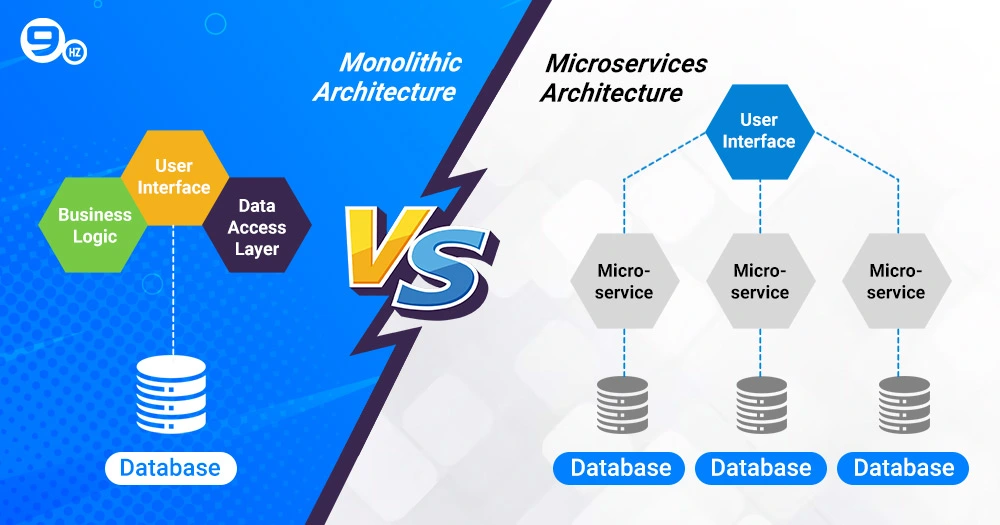Agility is a defining trait of today’s most successful businesses, especially when it comes to staying infallible against the changing whims of today’s fast-paced tech economy. Every modern business faces pressure to innovate, gain visibility, deliver premium service, and scale with agility—whether tapping into the untapped markets, launching a global SaaS platform, or redefining customer experiences.
To keep up, would you choose a team by your side during the day, or experts coding through your night? That’s the pivotal choice in offshore vs nearshore outsourcing for 2025.
Outsourcing is the process of assigning certain business processes or specialized tasks to external partners—and it has become a mainstay of digital transformation. From Fortune 500s to Silicon Valley startups, companies turn to outsourcing to bridge skill gaps, stay agile, and slash costs.
Key Market Insight
As per a 2025 study, 65% of US companies outsource one or more core functions, and the global outsourcing market is poised to exceed $525 billion by 2030. Deciding on nearshore vs offshore is no longer just a buzzword battle anymore—it’s rather a critical business decision shaping skill sets, innovation, and the overall profitability.
Ahead is a read that sheds light on every angle—helping you resolve your query: “Is offshore or nearshore outsourcing right for my goals, team culture, or the intended market?”
What is Offshore Outsourcing?
Offshore outsourcing refers to the practice of hiring an offshore team or an experienced service provider in a distant country, often with a different time zone, to handle IT support, finance, HR, software development, and other business operations.
In simple terms, offshore outsourcing means your organization collaborates with skilled experts outside your home country to manage core or secondary projects efficiently!
1. Essential Characteristics of Offshore Outsourcing
- Access to a Global Talent Pool: Work with the world’s leading offshore developers, designers, engineers, QA testers, and support professionals across major offshore destinations like the Philippines, Ukraine, India, Eastern Europe, Southeast Asia, or LATAM.
- Significant Cost Savings: Reap the dividends of lower costs for things like labour, infrastructure, and operations, often slashing the development costs by 40–70% when compared to US rates.
- Global Clock Advantage: With teams working across different time zones, projects continue seamlessly 24/7, bringing a significant boost in efficiency and minimizing time-to-market.
- Cultural Differences: While many offshore companies emphasize building English proficiency and cultural forwardness, certain projects can encounter initial communications or workflow hurdles.
- Legal & Compliance: Businesses are required to navigate varying data protection laws, IP rights, and regional regulations based on the offshore country.
2. Real-World Example
A US fintech company facing a lack of experienced experts built an offshore software development team in India. As a result, it brought down the overall hiring expenses by approximately 50%, tapped into specialized tech expertise, and rolled out a brand-new product 6 months earlier than planned.
The Best Offshore Development Center Services
Leading providers such as The NineHertz focus on offshore development center services and deliver the following:
- Fully dedicated and secure teams
- Cutting-edge infrastructure
- Round-the-clock project management and completely transparent progress dashboards
- Bleeding-edge data security and compliance
Set Up Your Offshore Development Center Today With Expert Teams At The NineHertz.”
What is Nearshore Outsourcing?
Nearshore outsourcing equals collaborating with a nearshore team or nearshore partner located in any nearby area or country, typically bordering your market or only a couple of hours apart in work timing.
The perks of nearshore outsourcing? You access the best of global talent pools when ensuring a cultural fit, closer collaboration, and compliance through shared practices and time zones.
1. Key Characteristics of Nearshore Outsourcing
- Geographical Proximity: Short flights make in-person meetings or audits a lot easier, eliminating extremely long travel times.
- Similar Time Zones: Aligned work hours also enable real-time collaboration, regular standups, and highly flexible delivery.
- Cultural & Language Fit: Common holidays, business practices, and proficiency in English or bilingual skills.
- Moderate Cost Savings: Wages are comparatively way more cost-effective than onshore outsourcing, though usually higher than traditional offshore outsourcing.
- Regulatory Simplicity: Nearshore markets usually share or perfectly align with US/European data protection laws (such as Mexico, Canada, or Costa Rica).
2. Case Examples and Industries
A leading SaaS company in the United States sets up a nearshore development team in Costa Rica to launch a new solution. They gain dividends from daily real-time collaboration, bug fixes, and convenient journeys for quarterly reviews—all while minimizing the overall project costs by approximately 35%. Different sectors leveraging nearshore include fintech, e-commerce, edtech, healthcare, etc.
Offshore vs Nearshore: Key Differences
| Criteria | Offshore Outsourcing | Nearshore Outsourcing |
|---|---|---|
| Location and Proximity | Distant countries (Ukraine, India, etc.) | Nearby countries (Costa Rica, Canada, Mexico, etc.) |
| Time Zone and Communication | As much as 12 hours apart | Just some hours apart, enabling instant collaboration |
| Cost Efficiency | Cheaper labor costs and maximum cost savings | Moderate savings, less than offshore |
| Talent Pool Availability | Access to a huge global talent pool | Less extensive, yet culturally closer |
| Cultural Compatibility | More cultural differences | Minimal friction, smoother teamwork |
| Legal & Compliance | Diverse data protection laws | Usually, simpler compliance. |
Nearshore vs Offshore: A Comprehensive Comparison
1. Location & Distance
Offshore outsourcing partners might be based across the world, while nearshore partners are just a very short flight away, allowing frequent visits and more rapid trust-building.
2. Time Zones
Offshore outsourcing often involves overnight work cycles—extremely useful for round-the-clock development but hard for same-day responses. Nearshore outsourcing provides different perks, like shared working hours, enabling real-time collaboration.
3. Cost Efficiency & Savings
Offshore models yield significant cost savings and unmatched flexibility to extend or reduce teams; nearshore slashes costs compared to onshore, but might not always match offshore rates.
4. Talent Pool
Offshore equals a more extensive range and scale, while nearshore offers a smaller pool with smoother onboarding and quicker alignment.
5. Cultural and Communication Fit
Nearshore triumphs in terms of culture, work style, and bilingual teams. However, offshore may need a bit of extra onboarding.
6. Legal/Compliance
While handling financial or healthcare data, similar data protection laws across nearshore markets help in streamlining audits and keeping potential risks at bay.
Build Your Dedicated Offshore Development Center And Accelerate Growth.
Offshore vs Nearshore- Pros and Cons
| Factor | Offshore Pros | Offshore Cons | Nearshore Pros | Nearshore Cons |
|---|---|---|---|---|
| Cost | Lowest global labor rates | Sometimes hidden costs | Still saves over onshore | Not as cheap as offshore |
| Communication | 24/7 productivity | Delayed feedback | Real-time sync, fewer missteps | None |
| Travel | Less practical | Expensive/rare | Fast, frequent, affordable | None |
| Skills | Largest tech pool, niche skills | More cultural onboarding | Bilingual, culturally close | Smaller talent pool |
| Regulation | Must vet for compliance | Legal complexity | Smoother audits, compliance | None |
A Quick Cost Comparison: Offshore vs Nearshore vs Onshore
| Model | Avg. Hourly Rate (USD) | Overlap with US Time | Typical Ramp-Up Time | Example Markets |
|---|---|---|---|---|
| Offshore | Around $20–$40 | Low–Moderate | Minimum 2–4 weeks | India, Ukraine, the Philippines, etc. |
| Nearshore | Around $40–$60 | High | Minimum 1–2 weeks | Mexico, Costa Rica, Canada |
| Onshore | Around $100–$150 | Full | Within a week | USA, Western Europe |
Offshore outsourcing stands out when it comes to savings. However, nearshore strikes a perfect balance between costs and collaboration, mainly for projects requiring cross-border teamwork or regular updates.
Advantages of Offshore Outsourcing
There are a number of offshore development Center Benefits that businesses can leverage by partnering with a foreign IT team. some of the core advantages are discussed below-
- Access to a Larger Pool of Global Talent: You may recruit the best QA experts, engineers, designers, and analysts from all over the world.
- Significant Cost Savings: Minimize your overall development costs and reinvest savings into new ideas or market your business.
- Scalability for Large Projects: Do you need at least 20 more developers next month for a big job? In such cases, an offshore hub can grow quite quickly.
- 24/7 Productivity: You can work on your project all day and all night, anytime you want, with “follow-the-sun” cycles.
- Specialized Skills at Scale: It’s easy to find AI, blockchain, or cybersecurity experts who are not available in the market near you.
- Focus In-House Teams on Strategy: Have your US or EU team come up with a product plan and help the business grow in leaps and bounds!
- Diverse Perspectives & Innovation: When people from different cultures work together, they often come up with fresh and innovative solutions to address challenges.
- Established Outsourcing Models: India, the Philippines, and other countries have robust infrastructure and mature frameworks that perform well.
- Flexible Engagement: As your needs change, you can work with us in different ways. For example, you could add more people, work on some projects, or use some teams.
- Enterprise Scaling: The bigger the project, the faster and cheaper it might be to finish.
Expert Take:
“By 2025, most businesses will use offshore outsourcing for things that aren’t their main focus. This will cut their payroll costs by 50% to 70% and let them bring goods to market twice as fast.” – Gartner’s 2024 Outsourcing Report
Advantages of Nearshore Outsourcing
- Easier Collaboration Across Similar Time Zones: You can set up meetings, approve new features, and fix bugs in real time, which makes it easier to work together across time zones. You don’t have to wait till tomorrow.
- Better Cultural Alignment: When there are fewer cultural barriers, it’s easier for teams to get to know one another, add new members, and avoid blunders that suddenly crop up when things get ‘lost in translation!
- Faster Travel for Onsite Visits: You can easily fly out to arrange a sprint or review code.
- Easier and More Useful: Easier and more helpful: It’s easy and helpful to do audits, performance reviews, and training sessions on-site.
- Quick Problem Solving: Hotfixes, urgent updates, and sudden changes are all handled right away, and often on the same day.
- Relationship Building: People trust each other more when they visit often and share their culture. This discourages people from leaving and makes things more open.
- Easy Access to Multilingual Talent: This is especially useful for US organizations that deal with Spanish-speaking customers or support staff.
- Better Data Protection & Following the Regulation: In industries like banking, government, and healthcare, you need to follow the rules.
- Scalability and Flexibility: You can modify the number of teams you have to keep up with product cycles or market demand.
- Employee Retention: People who work nearshore are more likely to stay with the company and be more engaged than employees who work in huge offshore facilities.
Pro Tip –
If your project heavily depends on daily scrums, quick feedback, or live demos with any European or US-based clients, you can opt for nearshore outsourcing. Why? Because it might provide the most optimum ROI for speed and customer satisfaction.
Challenges of Nearshore vs Offshore Outsourcing
Nearshore Outsourcing: Common Challenges
- More Expensive Than Offshore: You can save money, though not as much as with offshore.
- Limited Talent Pool: In smaller markets, there may not be as many experts with the specialized capabilities, or there may be sudden staff shortages.
- Risks in the Regional Market: Shifts in the economy, instability, or new rules can all pose serious problems.
- Changes in Availability: In small markets, there may not be enough top engineers to cover all the posts.
- IP and Contractual Nuances: Even if the rules are the same, you should constantly check contracts for IP and data security.
Get Access To Top IT Talent Through A Reliable Offshore Development Center Servcies.
Offshore Outsourcing: Common Challenges
- Significant Time Zone Differences: The time zones are very different; therefore, urgent requests might have to wait more than 12 hours.
- Communication Gaps: If staff don’t obtain the necessary training, language and workflow gaps could slow things down.
- Compliance & Data Protection: In fields like healthcare and banking, where privacy is paramount, we need to be more vigilant.
- Longer Ramp-Up Time: It could take longer to get things going and build relationships.
- Hidden Costs and Turnover: You can lose some of the money you save at first because of training, travel, or personnel turnover.
Pro tip- Always check references, ask for clear communication, and let US and EU clients choose partners who have a proven record of getting things done on schedule.
Which Model Should You Choose? Nearshore or Offshore
Choosing between offshore and nearshore isn’t just a simple cost calculation! It’s rather a critical decision that impacts each aspect of your business.
1. Key Factors to Take into Consideration
- Complexity of the Project
- Is it niche technology/AI? Offshore might win.
- Compliance that’s complex? Nearshore gives you peace of mind.
- Budget and Cost Sensitivity
- Offshore outsourcing delivers the biggest ROI for startups or initiatives that need to save money.
For important projects that deal with customers, nearshore might be worth the extra money to make sure everything is in line.
- High-touch teams, fast pivots, or agile cycles? Nearshore is the best.
- Progress 24/7 and growth that follows the sun? Go for offshore.
- Will you need to grow quickly? Offshore can help you ramp up quickly.
- Is your brand’s repute or safety at stake? Nearshore’s alignment and control may be quite important.
2. Hybrid Approach and Future Trends
Most successful businesses now use a hybrid outsourcing model, combining nearshore and offshore groups to achieve both seamless collaboration, specialized expertise, and exceptional value.
How The NineHertz Helps with Offshore Outsourcing Models
With its experience lens on, The NineHertz has continued to deliver measurable success for decades, helping global businesses supercharge their agility and improve their benchmarks through tailored, optimized offshore outsourcing models.
Here’s how The NineHertz has been helping businesses reach new heights of resilience, flexibility, scalability, and cost-efficiency through offshore outsourcing in today’s tech arena.
A Peep into Services Offered by NineHertz
- Full-cycle software development for the web, mobile, apps, and the cloud.
- Teams that just work on call center operations, QA, and support.
- Adding staff and scaling up rapidly
- Security audits and compliance for businesses that have to follow rules (finance, healthcare, SaaS)
- Transparent delivery, real-time dashboards, and dedicated managers
What Makes The NineHertz Worth Your Trust?
- More than 500 successful projects, clients from the Fortune 500, and world-class reviews
- Offices in the US, UK, India, Australia, and LATAM
- Processes that are accredited by the industry (ISO, GDPR, SOC2, HIPAA)
Conclusion: The Path to Confident Outsourcing Decisions
There’s no cookie-cutter or one-size-fits-all response to the debate around Offshore vs Nearshore.
Just remember –
- Nearshore outsourcing excels at communication, collaboration, and cultural fit.
- Offshore outsourcing unlocks the world’s broadest global talent pool, unmatched cost efficiency, and round-the-clock productivity.
- For most organizations, hybrid outsourcing—combining both models—is the key to unmatched agility and unparalleled global success.
2025 is expected to witness even 75% businesses leading towards hybrid teams for 24/7 cross-border innovation, development, and unbeatable value. Result? Pin your faith in an outsourcing partner who understands your requirements, your vision, and your target market.
Take time to align your business goals and weigh the potential risks before taking the action. The right outsourcing model can redefine your growth and reimagine your future!
Ready to tap into world-class talent and cut costs dramatically?
Contact The NineHertz today for a tailored outsourcing solution that delivers real business outcomes and proven impact!
FAQ’s
1. What is the difference between nearshore and offshore outsourcing?
Nearshore outsourcing is all about partnering with a service provider in a nearby country that shares similar culture and time zones. Offshore outsourcing refers to working with a team in a distant country, usually with significant gaps in time zone and lower costs.
2. Which is more cost-effective: nearshore or offshore?
Offshore outsourcing is usually a bit more affordable, as it offers significant cost savings, mainly due to lower labor costs. Nearshore outsourcing saves money over onshore models and adds better cultural and communication alignment.
3. How do time zones impact nearshore vs. offshore collaboration?
Time zone has a very important role to play! Nearshore outsourcing provides identical or overlapping business hours for seamless communication. On the other hand, offshore outsourcing often involves significant time zone differences that might either enable round-the-clock work or cause communication delays.
4. Is offshore outsourcing riskier than nearshore?
Yes, it’s true that offshore outsourcing might involve certain challenges like communication gaps, cultural differences, compliance with foreign data safety laws, etc. But, with the right partner and clear processes, challenges could be warded off.
5. Can small businesses benefit from offshore outsourcing?
Yes, no doubt! There are many budding and midsize companies that rely on offshore outsourcing to access the best of the talent pool globally and slash costs, as long as they maintain transparency in the communication and handle projects with utmost diligence and commitment.
6. What factors should I consider before choosing between nearshore and offshore?
A few factors you have to consider are the complexity of a project, budget, time zone needs, regulatory compliance, desired level of collaboration, and more!
7. Does The NineHertz offer both nearshore and offshore outsourcing services?
The NineHertz mainly specializes in offshore outsourcing. For decades, clients globally—with unique goals, needs, and budgets—have benefited from the excellence of The NineHertz’s alliances. The team has also partnered with select nearshore teams to offer a full spectrum of solutions customized to every client’s needs.
Great Together!









